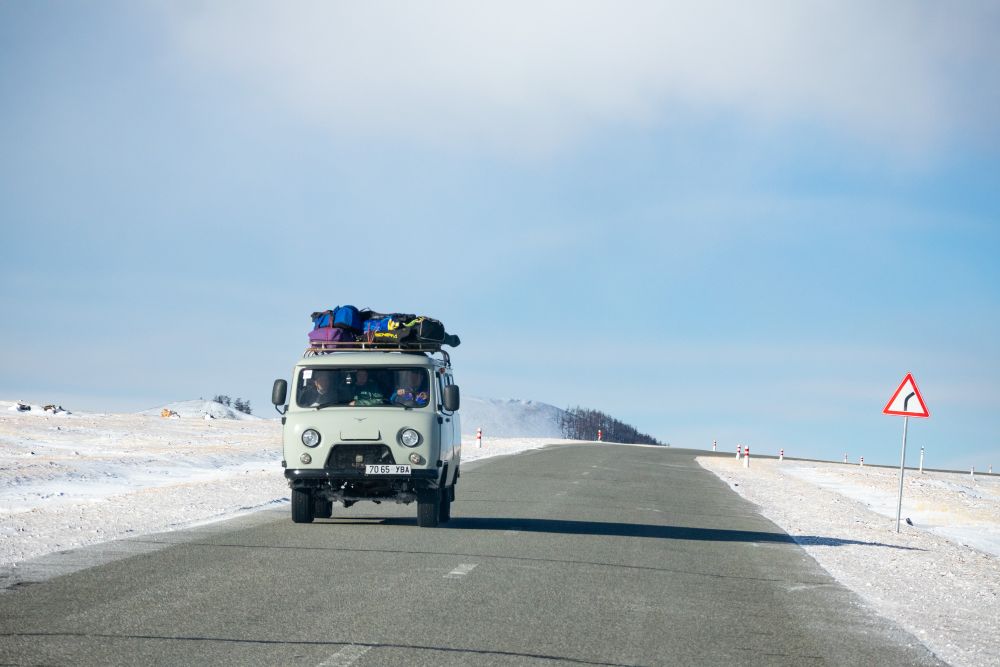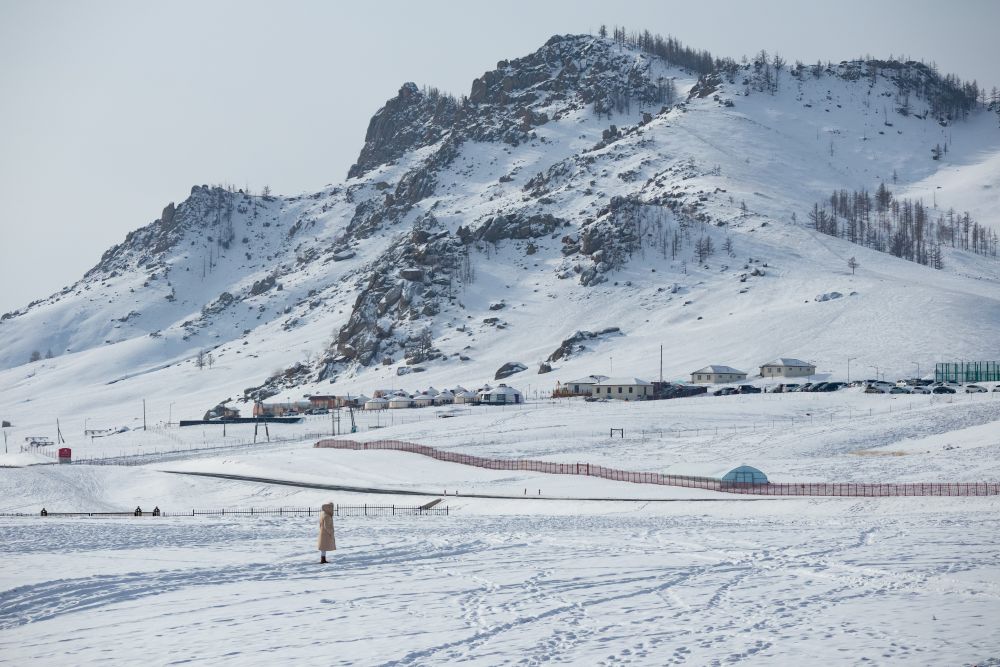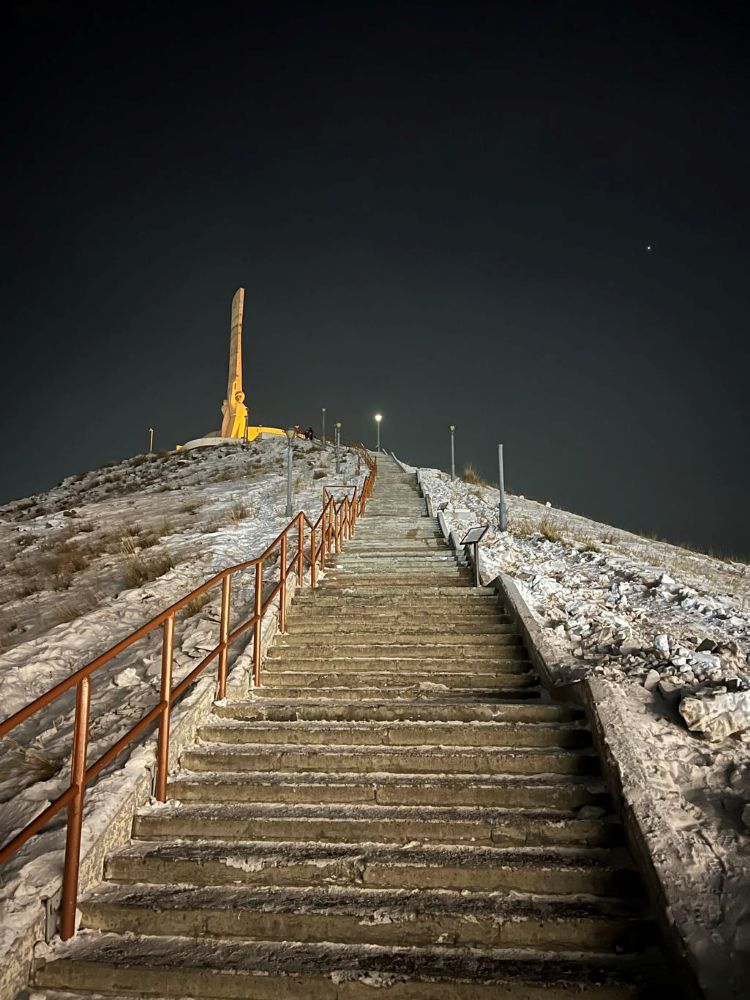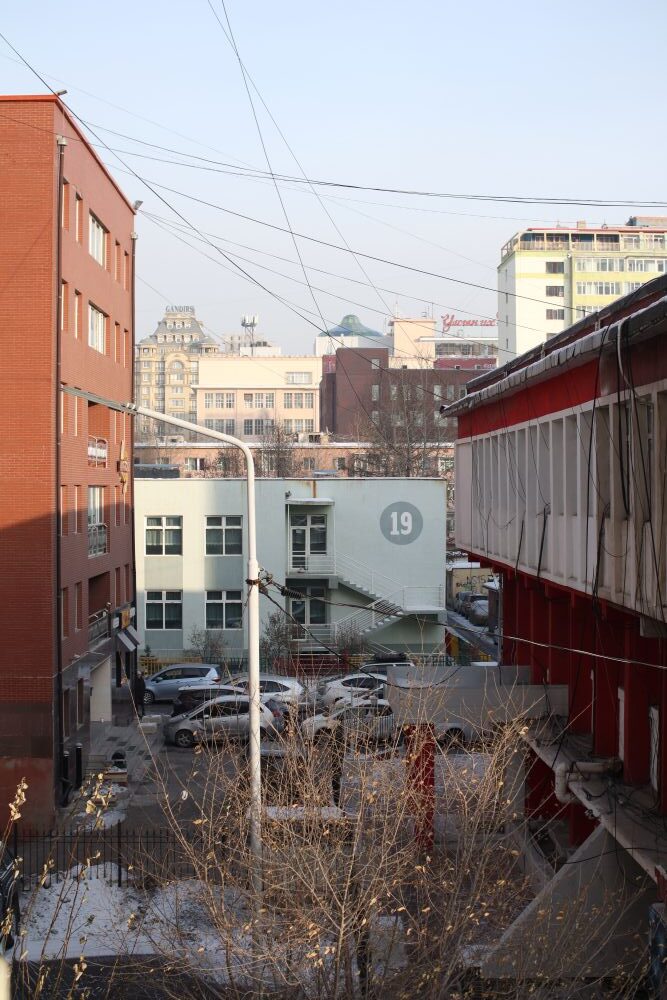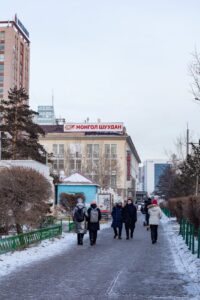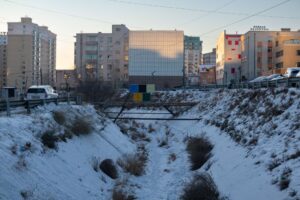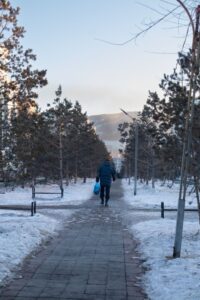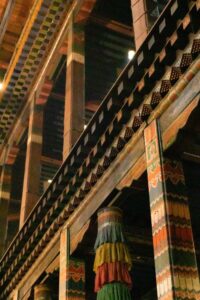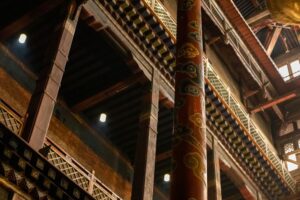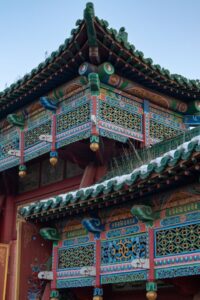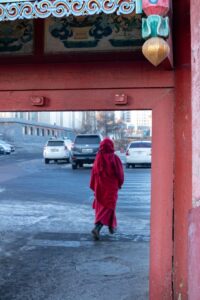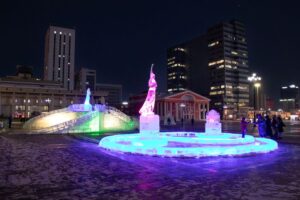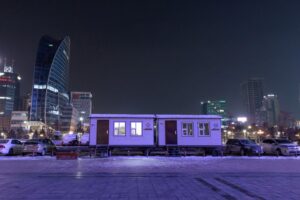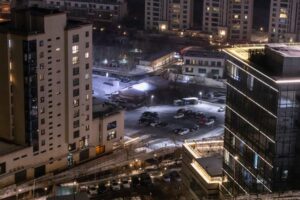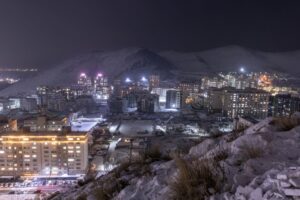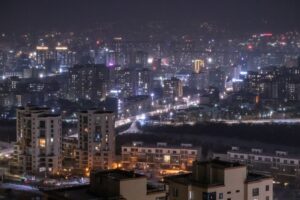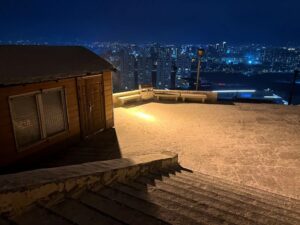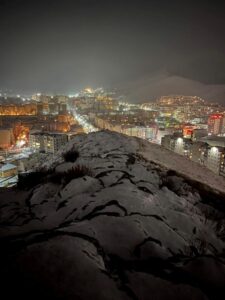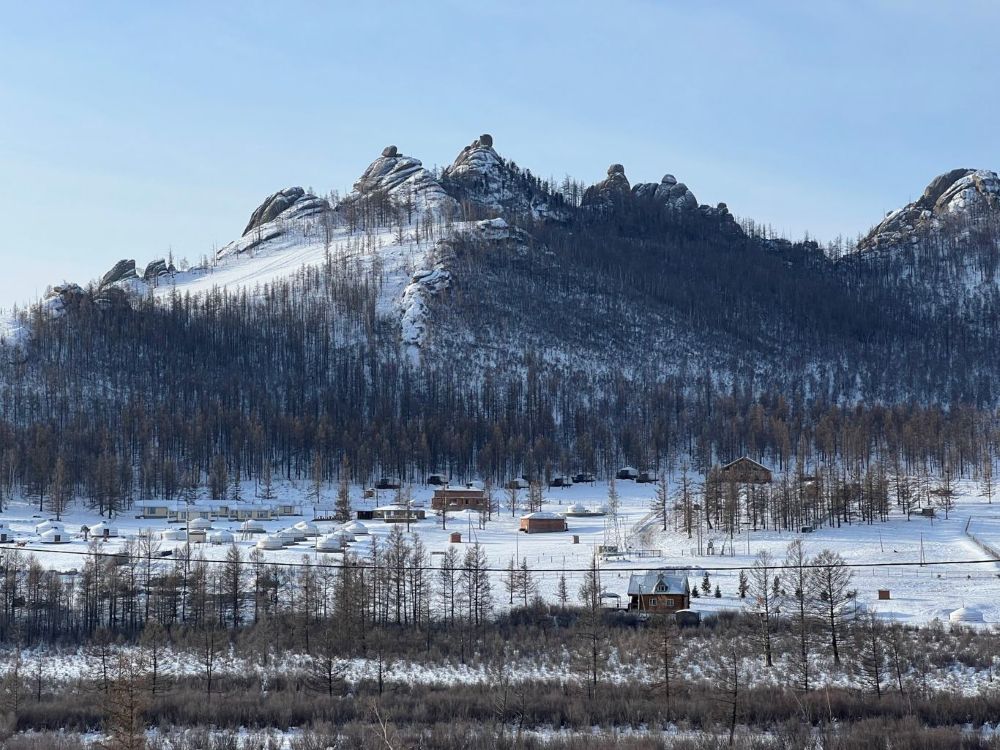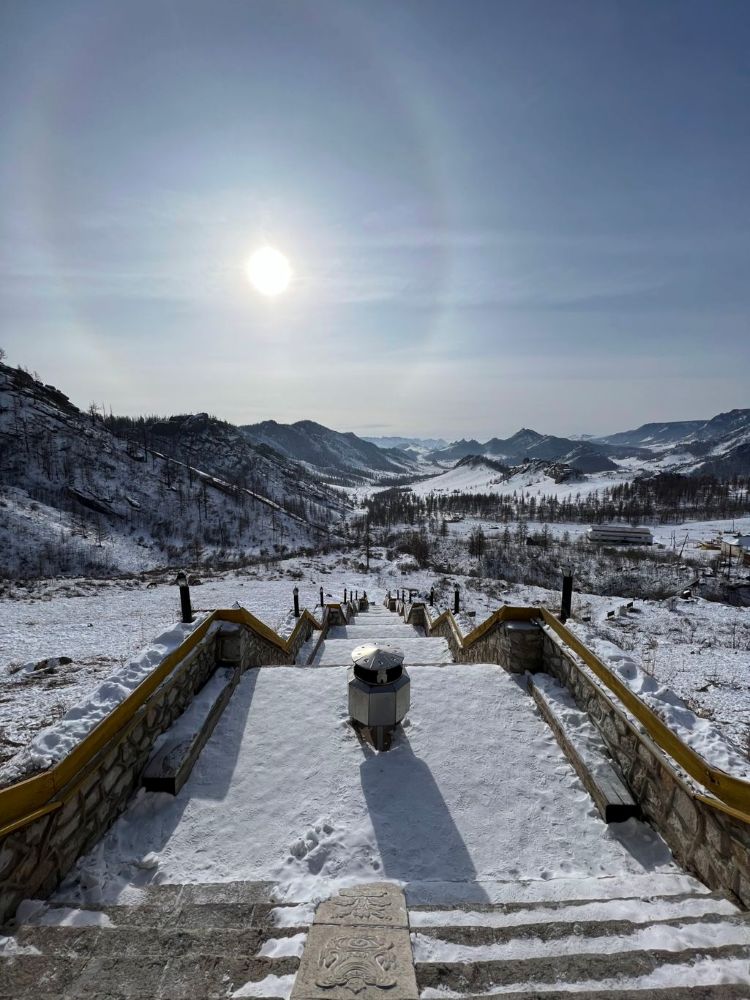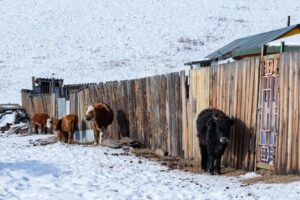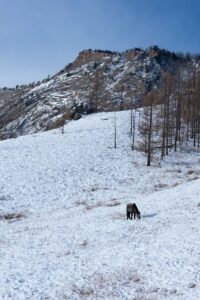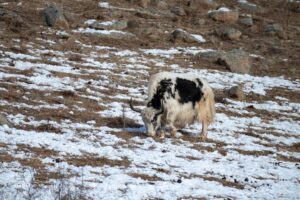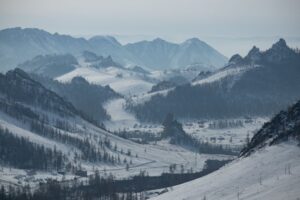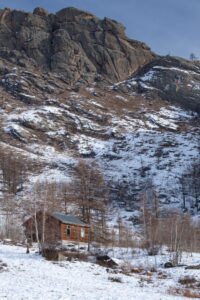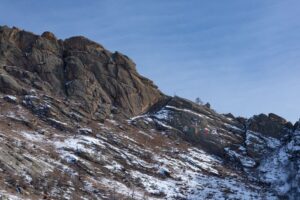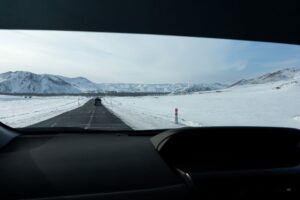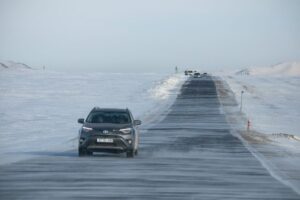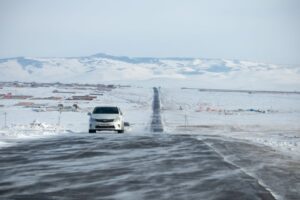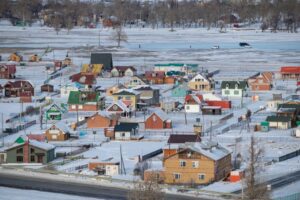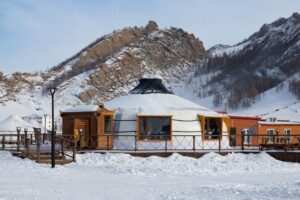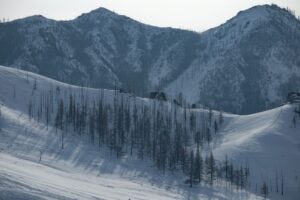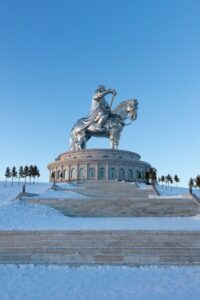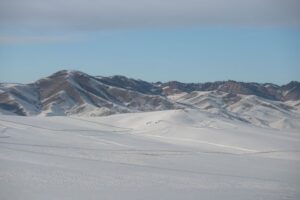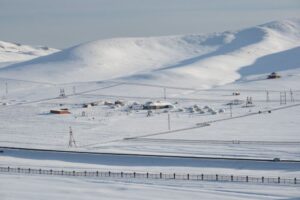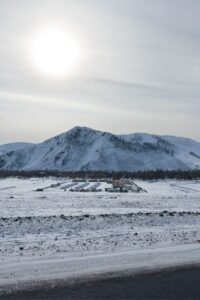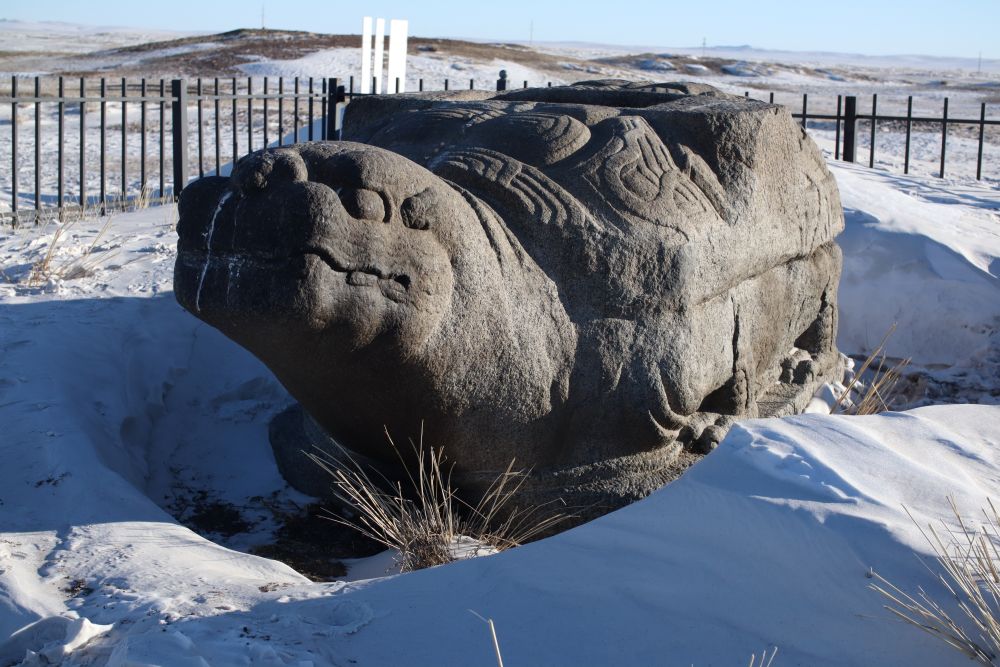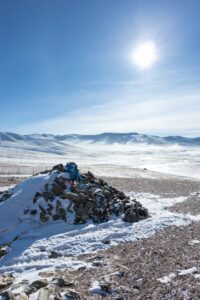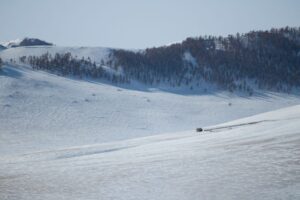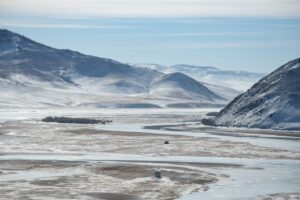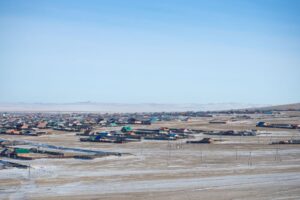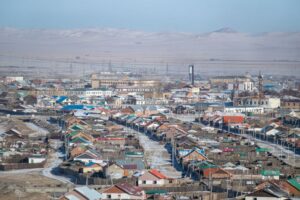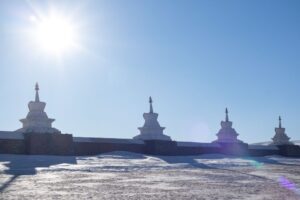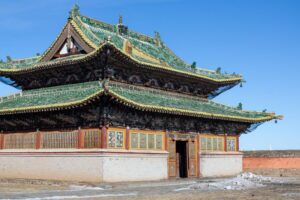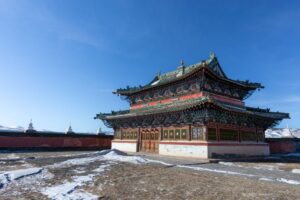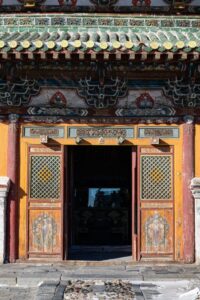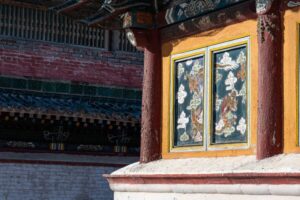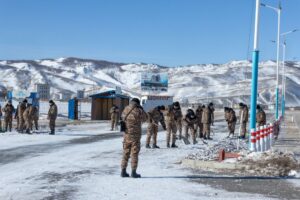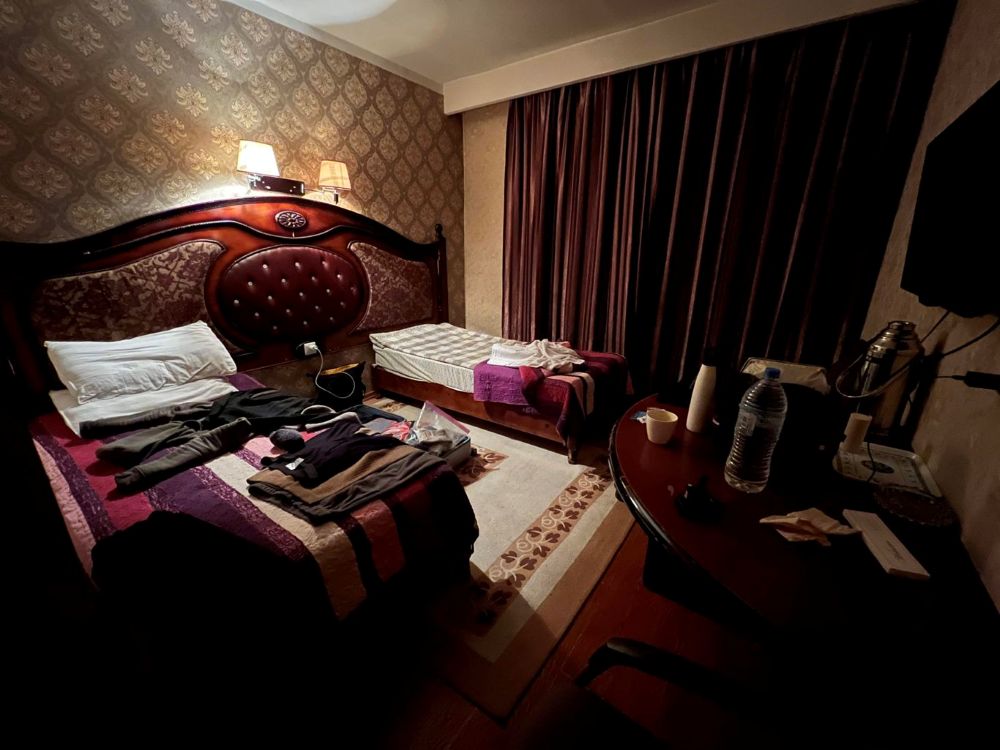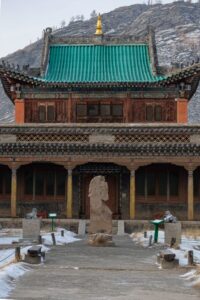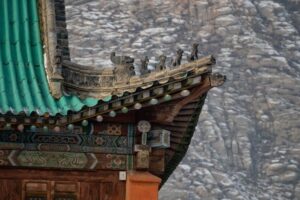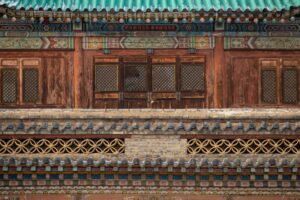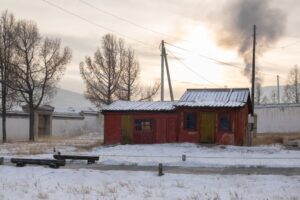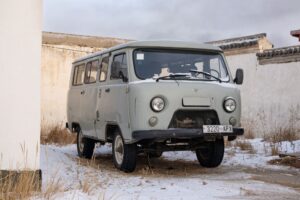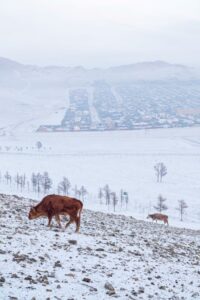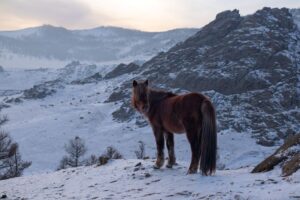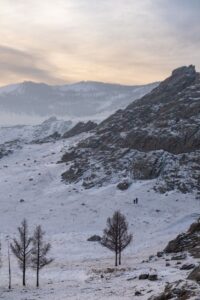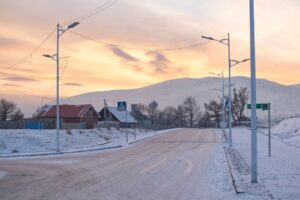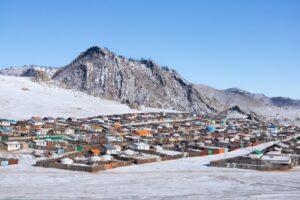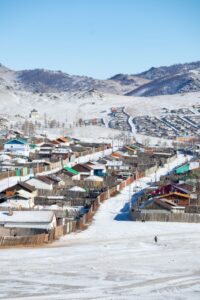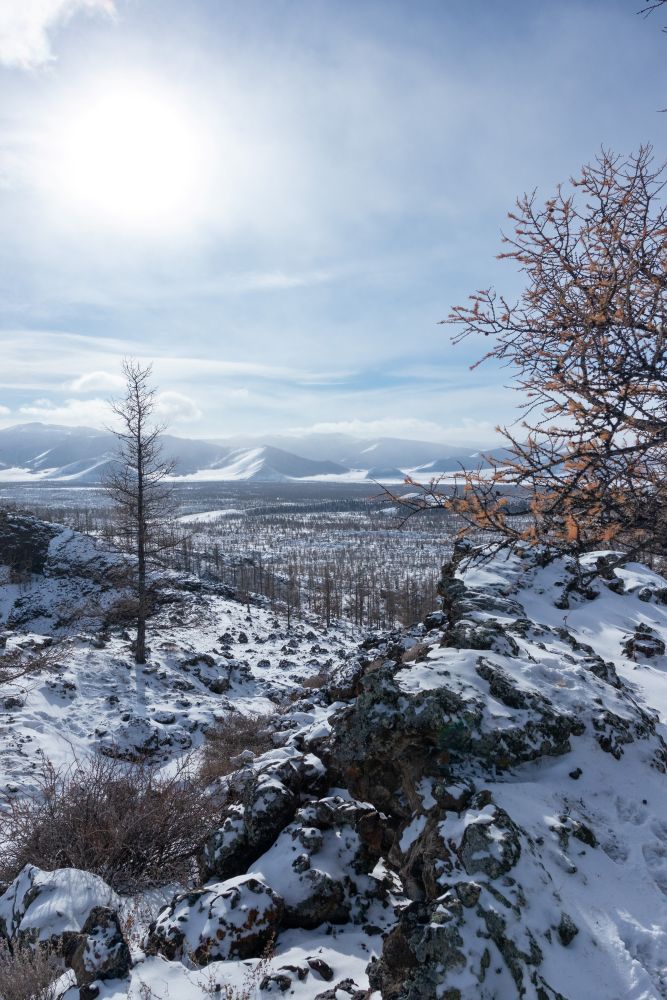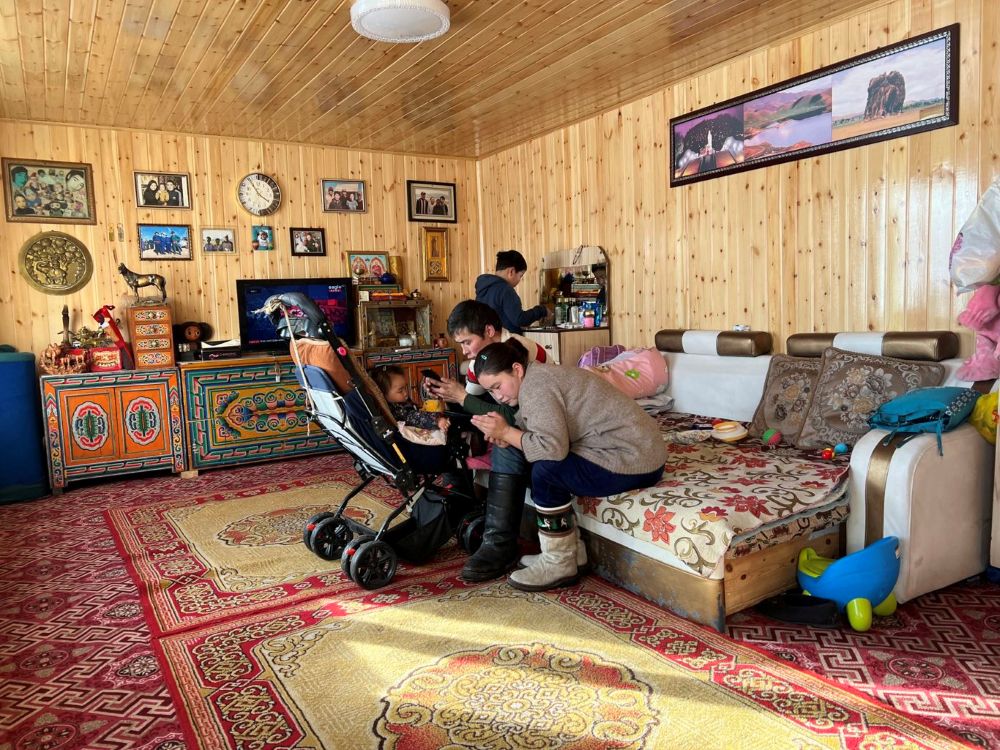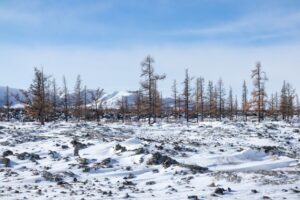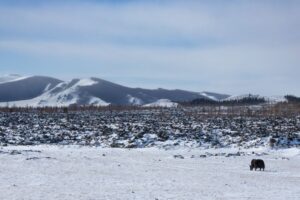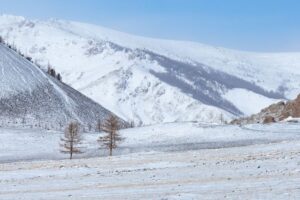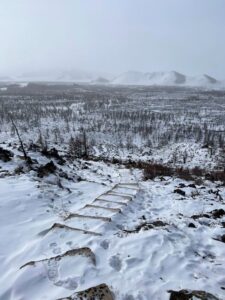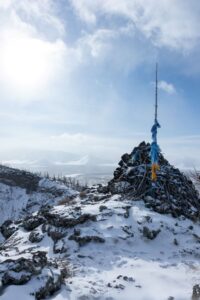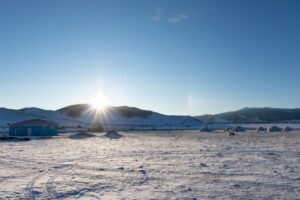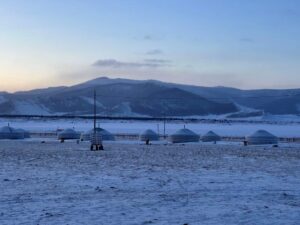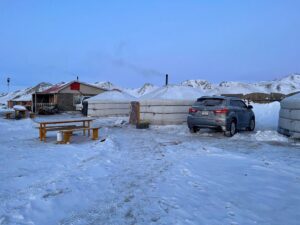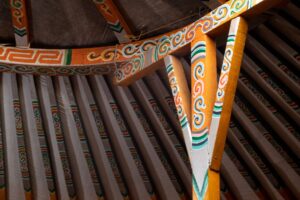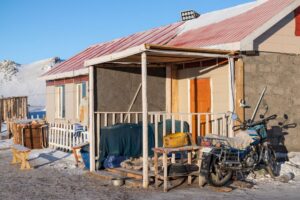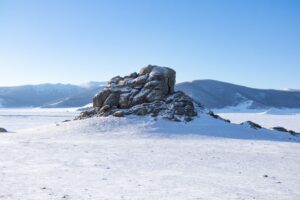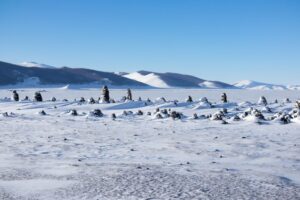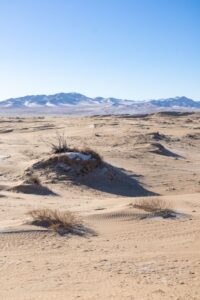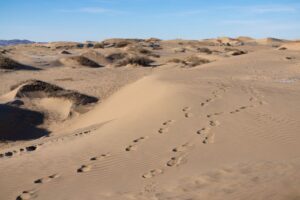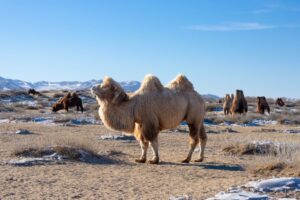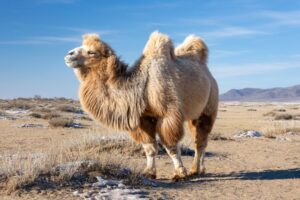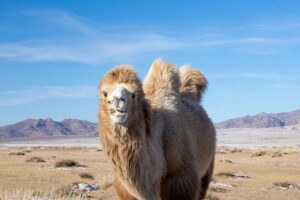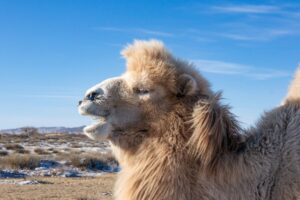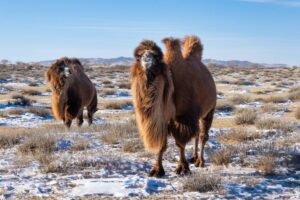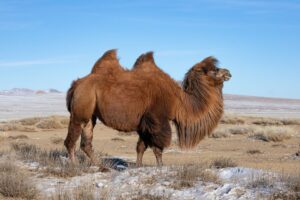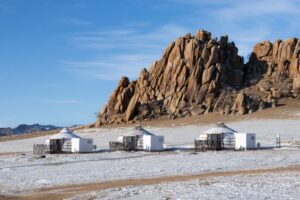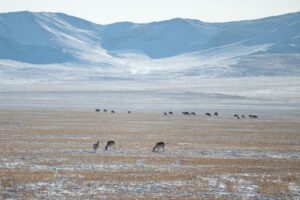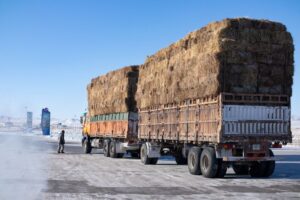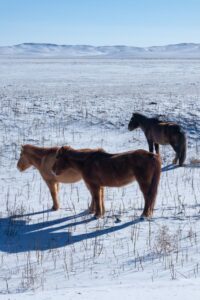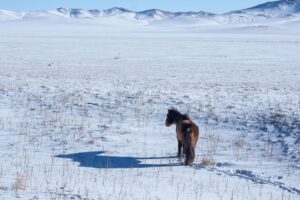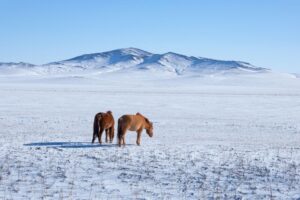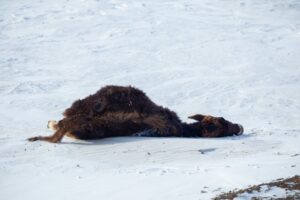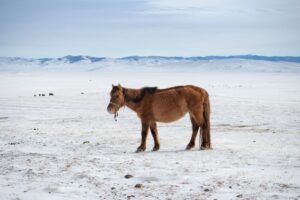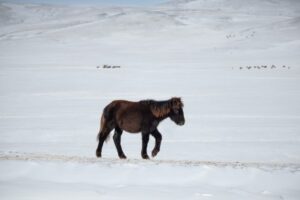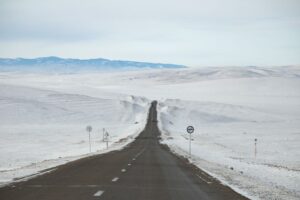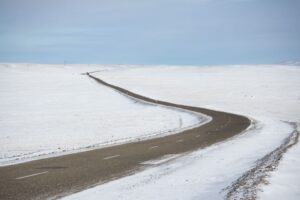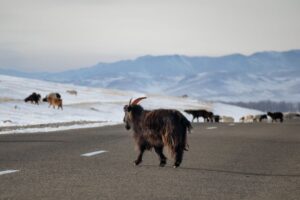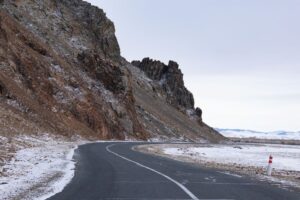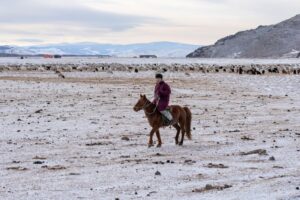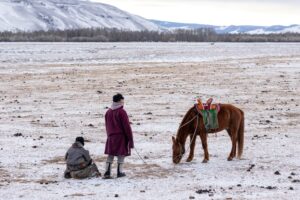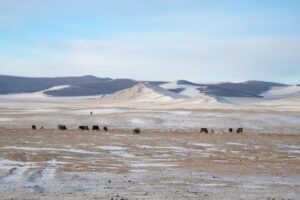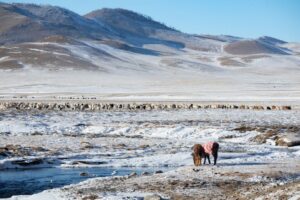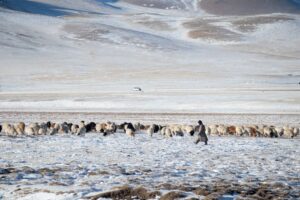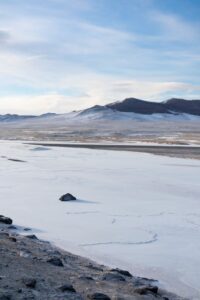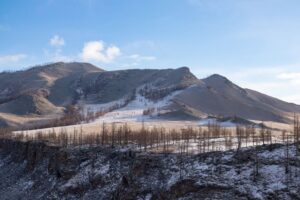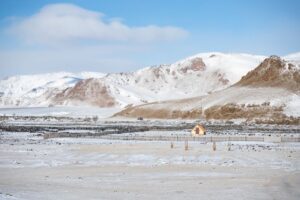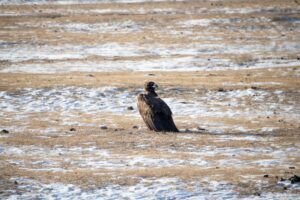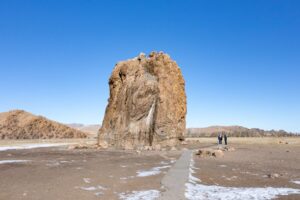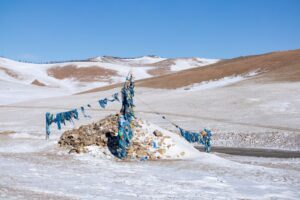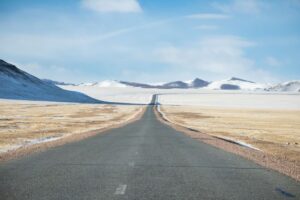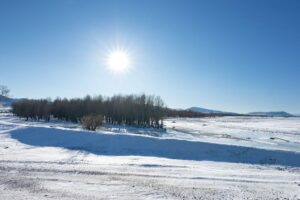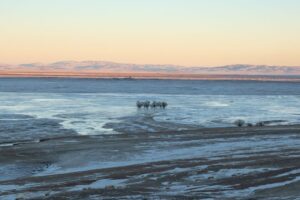My introduction to Central Asia
I spent my winter holidays of 2023 in Mongolia. After looking back, I don’t think anything could have prepared me for the experience I had for roughly ten days in this incredible country:
Starting from the weather, this Central Asian nation, located on a plateau roughly 1350 m above sea level, sees temperatures averaging -30°C during this time of the year.
Then, there is the population, or the lack of it thereof. With some 3.5 million people living in such a vast expanse, there are some 2.14 people per square kilometer (for comparison, Taiwan has 649 people). And to make things more interesting, roughly half of that population is located in UlaanBaatar, its capital city.Last but not least, the majesty and otherworldly aspect of the landscape is something I keep struggling with to find words to describe. Luckily, images will help me better for that purpose in this post.
Visiting a different Mongolia
I believe that countries with four seasons are actually four different countries in one same area. They have something worth exploring all year round. Seasonal changes in the colors of nature and people’s lifestyle means very different scenes. Mongolia is just one of those countries.
An internet search for “Mongolia” shows results vastly dominated by pristine, idyllic landscapes of green grass, deep blue skies, and smiling locals ready to receive you in one of their gers. Those are the typical views of the Mongolian summer. Undoubtedly, this is the peak season for visitors, roughly from the end of May to September.
In contrast, when typing “Mongolian winter”, the difference in the search results is quite dramatic: perfect green turned into silver white, solitary roads that get lost far ahead in the white horizon, and many scenes that just seem to be from a planet at the corner of its solar system. It is no surprise that despite a few internet sources embracing and encouraging travelers to “have fun in the Mongolian winter”, most travel blogs advise to save the money and visit during any other season.
Nevertheless, this different Mongolia with its unforgiving yet beautiful winter is the one I got the chance to witness. As I prepared for an unforgettable trip at the end of January, my excitement grew bigger than my fear of extreme cold weather and I bought my plane ticket. After all, Mongolia was on my list of places to visit for a long time. I also thought it would be a quite unique experience and an opportunity to challenge myself to endure a proper winter adventure abroad (in one of the coldest places on earth no less) regardless of how seemingly reckless or even suicidal the decision was. What could go wrong?
A plan for a road trip like no other
Since I found no information that was actually useful to travel to Mongolia in the winter, I gathered information from several sources highlighting places worth visiting during more hospitable seasons, and made a draft. With this draft done, I checked with some local contacts in Mongolia about the feasibility of it and came up with a solid itinerary.
It is worth mentioning that at other times of the year, renting a car to freely roam the countryside is entirely possible. However, Mongolian winter is no joke, so as a solo traveler, I played it safe and arranged a private tour that included the most needed knowledge of the locals to get by. This decision indeed proved useful more than once during my trip.
The itinerary had two parts: the first one included a one-day trip to the east of Ulaanbaatar, to Terelj and Chinggis Khaan Statue Complex. The second and longest was the journey to the countryside. A round trip that included stops in the cities of Kharkhorin and Tsetserleg, and finally to Terkhiin Tsaagan Lake, located some 650 Km from the UlaanBaatar. The lake, completely frozen and indistinguishable from the land at this time of the year, would be the finish line of the trip. On my way back, we made stops again in those two cities, giving me a second chance to explore other areas and take some shots there as well.
Here are the main locations I visited across the country pinned in a map:
Ulaanbaatar, the coldest capital in the world
As soon as the plane arrived at Chinggis Khaan Airport, I immediately understood why this season is the least popular for travelers. A normal hoodie and one inner layer of insulating clothes were no different to being naked when it comes to withstand this level of cold.
It is hard to imagine a scenario where -35°C of temperature can make for an enjoyable holiday. But after witnessing with my own eyes Mongolians living their lives in the city and in the countryside, everything started to make a bit more sense. With the right type and amount of clothes (and shoes), living inside a freezer of infinite dimensions actually became an (mostly) enjoyable experience.
Although it was never part of the USSR, Mongolia was kept closely aligned as a “protectorate state” of the Union. Even after the events that led to its full independence in 1991, the Russian influence in the culture still remains strong to this day. The Soviet-era architecture of UB (short for UlaanBaatar, as locals call it) and monuments are a clear reminder of this past.
Moreover, I found UB to be more traveler-friendly than it gets credit for. With its convenience stores and most of the historical landmarks located within walking distance from the city center, the only thing I had to worry about during my photographic exploration was the critically low temperatures freezing any uncovered skin as well as my electronic devices.
To my surprise, this particular winter in which I decided to visit Mongolia not only was the coldest in recent years, but there was a day that turned out to be the coldest of the whole season: a breathtaking -40°C during the night. Besides opening the window for a few seconds to experience how life was sucked out of me by the cold air outside, life indoors was quite cozy and warm, though.
As the starting and ending point of my trip, I had some extra time to walk around UlaanBaatar and discover a few mainstream landmarks during daylight and after dusk.
Gorkhi Terelj National Park and Chinggis Khaan Statue Complex
We left UB early, so we catched the sunrise on the road. Some incredible sights just kept passing by the window as we drove along, including part of the Transiberian railroad leading all the way to Europe. Curiously enough, the temperature outside was -35°C that morning, while the temperature inside the car was 31°C. A difference of 66°C.
Once in Gorkhi Terelj National Park, we headed to Aryapala Temple, passing by the popular Turtle Rock and many holiday camps which were closed for the winter. The temple is located halfway up a mountain, thus, after a short and civilized climb of stairs and crossing a bridge, the reward is a fantastic view of the valley below with its frozen tree patches scattered across the land.
After a well-deserved Mongolian lunch (meat and more meat), we arrived at the Chinggis Khaan Statue Complex. Probably the only thing that matches the intimidating size of this monument made out of steel is the local’s heritage pride, who are the direct heirs of the Mongolian Empire, which conquered a vast territory from the Pacific Ocean to Eastern Europe. The complex has a small museum inside that includes an interesting climb to an observation platform that also happens to be the neck and head of the Khaan’s horse. From there, the proud sight of the leader is something impossible to avoid. It is a fantastic spot for photos as well.
Just when I thought that I had my share of amazing sights for the day, there was still a truly unforgettable sight left stored for this pair of eyes to witness. As we drove back to the city, with the sun sending its last rays of golden light before dusk, and the wind blowing from the plains, the freshly fallen snow flowed in waves of diamond-like dust that danced from side to side of the road. This was a sight that I would keep seeing for the rest of my days in the countryside and certainly one of the highlights of the whole trip.
Kharkhorin: the ancient capital of the Mongolian Empire
Nestled in the Orkhon Valley, Kharkhorin, the ancient capital of the Mongol Empire, blends history, culture, and natural beauty. My first stop in this city was the small yet lovely Kharkhorin Museum. For roughly an hour, I got some very interesting insights into the city’s role as a political and cultural hub during the Mongol Empire.
Next, it was time to zoom out and get to the city outskirts, onto the hills southwest. Here, I can mention three highlights: the Monument for Mongol States, to give closure to the history and culture lesson of the day, the panoramic view of Kharkhorin, and the superb view of the Orkhon River. The strong winds coming from the river valley made it nearly impossible to stay out of the car for too long before it became unbearable, even with clear skies, and the batteries of both my phone and camera froze. Therefore, we continued our journey.
On my way back to UB, I finally had the chance to visit the main attraction of the city: the Erdene Zuu Monastery, a Buddhist complex that stands as a testament to the region’s religious history. During the height of the Mongol Empire, the monastery was contained within a much larger area, of which only the ancient city walls and the iconic “First Turtle Marker of Kharkhorin City” remain. The former grandeur is only presented these days as scale models and illustrations.
Tsetserleg: a short but well-spent stay in the heart of Arkhangai
After a long drive from Kharkhorin, we arrived in Tsetserleg. As soon as we went in, I could see the great contrast with the city I just left. The Russian influence in urban development was more obvious here and therefore more similar to that in UB.
The first stop was the Buyandelgeruulekh Monastery, during the late afternoon hours. It sits on a high point north of the city, at the foot of the local mountain range. From there, I was able to enjoy a cold, faint sunset and a panoramic view of the city that at this time of the year is shrouded in thick black smoke produced by the coal burned for heating.
This source of energy is commonly used here during the winter instead of cleaner options such as electricity. Perhaps due to the lack of access to the latter or due to its high price. Unfortunately, this heavy pollution got me an acute sore throat for the next two days.
My time here, although brief, was well spent. From midday sun to the blue hour, the opportunities to shoot temples, horses, everyday life and nature were all there.
Khorgo Mountain and Terkhiin Tsagaan Lake
The day started very early, leaving Tsetserleg before the break of day, because we still had a great distance to cover. Even after a few days already on the road, the countryside sights were as mesmerizing as the first day. The first stop of the day was just next to the road, to stretch our legs and breath some fresh air while I filled my eyes with the views of a canyon with a frozen river at its bottom. For lunch, I had the biggest and meatiest lamb dumplings I ever had in my life. The most needed energy for what was coming.
Despite my sore throat, I soldiered on and got in the mood for a hike to the top of Khorgo Mountain, an extinct volcano. Like many things in this trip, it was my first time hiking under sub-zero temperatures, feeling the sweating inside and the relentless cold outside freezing my eyelashes. But as any other good hike, the reward at the top was totally worth the effort. Views of the crater covered in snow and the distant lands covered with a silver blanket.
After beating this outdoor challenge, it did not take too long to get to Terkhiin Tsagaan Lake, the farthest point of my trip from Ulaanbaatar, and the innermost I have ever been in Central Asia at that time. We arrived at a campsite where the hosts received us in their living room with tea and some local snacks. It felt wonderful to spend at least a few moments in the heart of their home, with the TV on, the warmth of the heating, and a big window with views of the white vastness which in a different time of the year is a beautiful lake surrounded by green grass, and horses everywhere. I would spend the rest of my afternoon resting inside a ger, hoping that by the dawn of the next day I would feel recovered and ready to start the journey back to UB.
For anyone who grew up experiencing winter, where everything freezes over, coming this far within the Mongolian territory during the coldest of its winter could have been considered something mundane, even a waste of time and money. However, for someone like me who was born and raised in a tropical country, this experience has been and will continue to be a lifetime memory. The first time I saw rivers completely static, turned into ice rinks for people to hang out and ski. The first time I saw a lake so vast and yet completely frozen. So unnoticed due to the snow covering ice and land alike.
Elsen Tasarkhai
On our way back to UB, we made a stop in Elsen Tasarkhai, a semi-deserted area that offers a sample scene of what the Gobi Desert is like. In fact, this place is commonly referred to as the “mini Gobi”. After sliding down some desert dunes, I had time to take some photos of this unique landscape since the weather had improved a few degrees in the past few days.
As impressive as it is, unfortunately this “attraction” is the result of the desertification issue troubling this area for some time, according to the locals.
Next, I had the chance to visit another local family living in the countryside, this time, running a camel ride business. I couldn’t contain my excitement at seeing and photographing these magnificent beasts that surprisingly were very photogenic as well. After I was satisfied with the photo session, I went for a ride on one of those around the area, trying to imagine how life must have been a century ago when roads and cars were not available, and people had to rely on horses or camels to move across the vastness of this wilderness. It was a memorable experience for sure.
These stops served as a wonderful epilogue of the whole trip to the Mongolian countryside. To fill our bellies before the last leg to UB, we stopped for a calorie-rich late lunch at the same local fast food restaurant that we visited a few days ago, Khaan Buuz, when we were heading towards the adventure.
“The journey is the reward” never felt truer than in Mongolia
Mongolia is the kind of place where exploring as far and wide as one desires can actually become something doable. Roads are in very acceptable conditions, connecting cities and towns scattered throughout the land, but if what you want is to get off the paved road and drive towards that distant hill that you fancy, no problem. I would dare to say that this country redefines what “road trip” and “outdoor adventure” means, with its lakes, rivers, peaks, forests, canyons and much more.
A country so vast and yet so sparsely populated makes long travel distances a signature trait of its tourism. Because of this, a great part of the action of my trip took place between cities, while sitting in the comfort of the front passenger seat, and one marvelous sight after another kept appearing right out of my window. In many cases, unapologetically asking to make a stop and get out just to admire and take the shot.
Thus, the co-pilot seat during this trip and in this season, was as comfortable as necessary to appreciate the beauty of the inhospitable landscape outside.
Between UlaanBaatar and Kharkhorin City
Between Kharkhorin City and Tsetserleg City
Between Tsetserleg City, Terkhiin Tsagaan Lake and back to Kharkhorin City
My takeaways of traveling in Mongolia during the winter
Looking back, it is hard for me to be sure whether that was a decision or just destiny that took me to Mongolia during the winter. Rationally, I knew that it would be tough to deal with temperatures below zero. In practice, however, temperatures were not just below zero but way lower than I could imagine. It was a trip with many first-time experiences for someone used to temperatures within a pleasant range of 18°C to 30°C.
My photography equipment was subjected to constant abuse due to the extremely low temperatures I experienced daily. Despite this, I tried to capture as best as I could all the beauty and uniqueness of this marvelous region of the world.
After what I experienced in these 9 days of traveling during the winter in Mongolia I now understand why not so many people visit during this time. On the bright side, though, hardly anyone ever feels like a crammed sardine the city landmarks, and probably this content can be useful for any brave soul planning a trip of this kind.
I also produced a three-part vlog of this trip with more details of the everyday life on the road.
